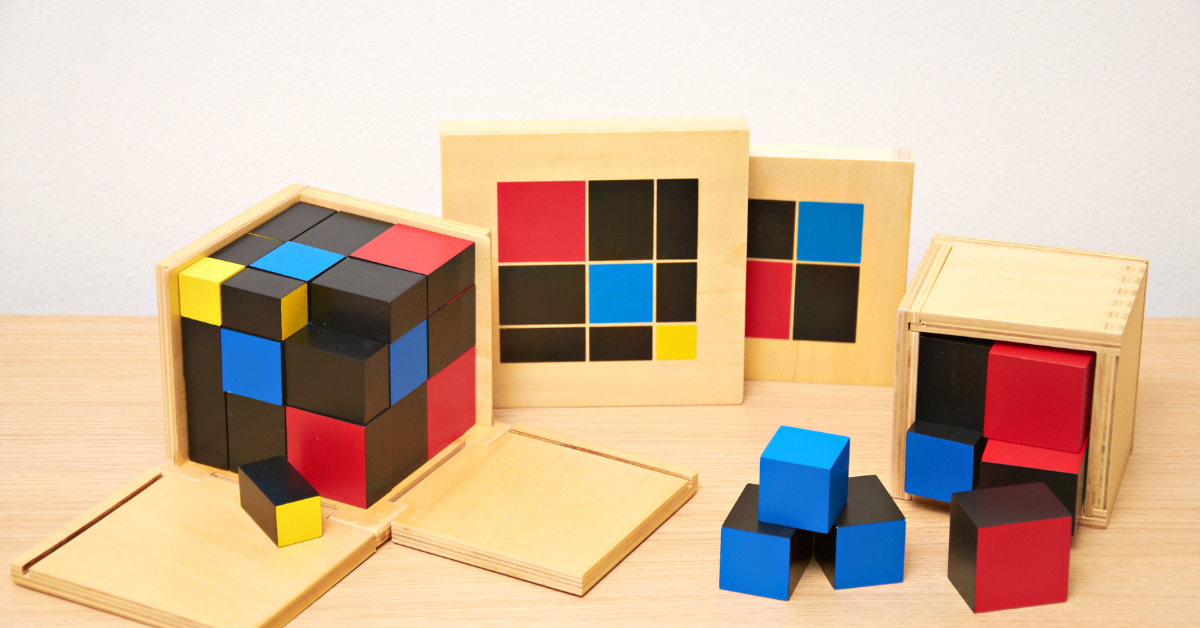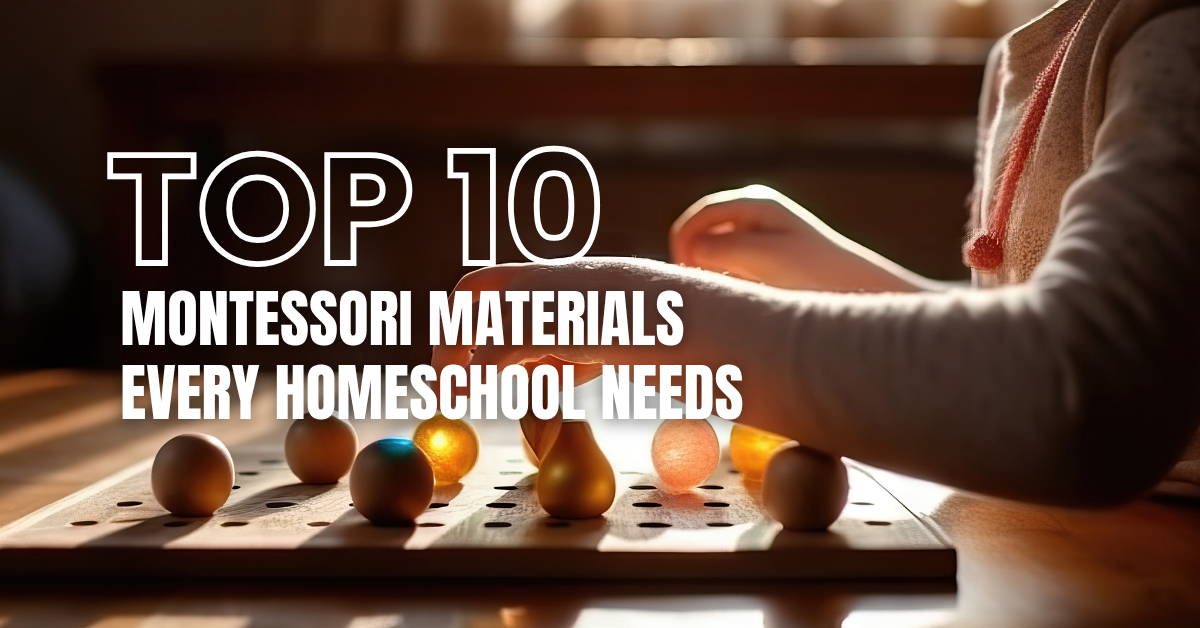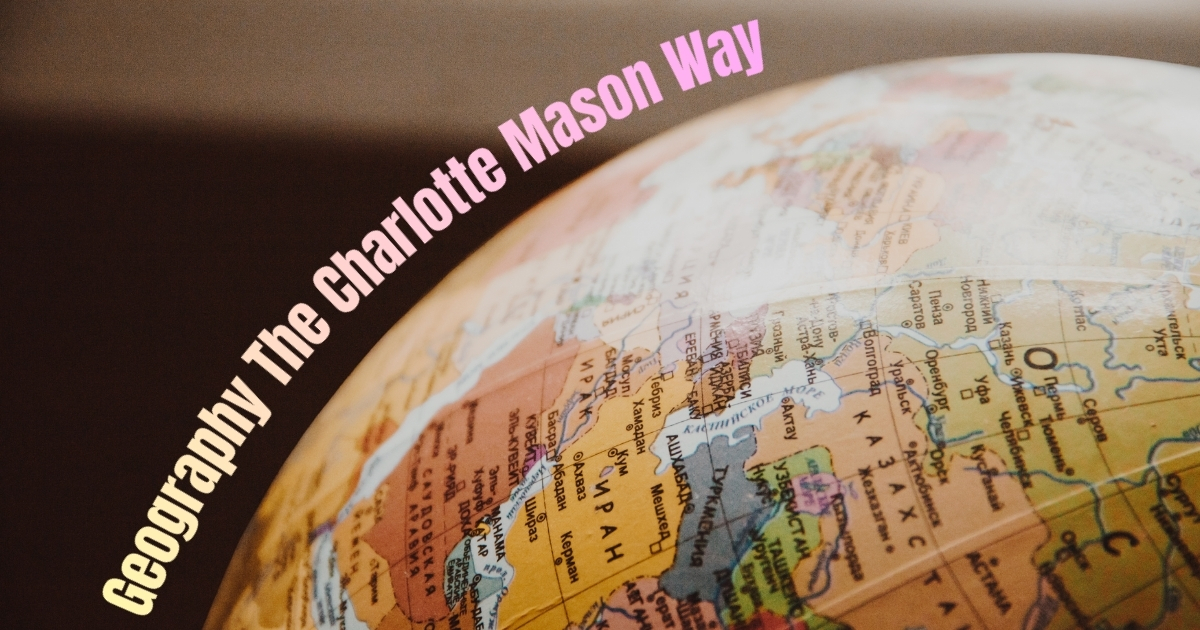Homeschooling can be a rewarding way to provide personalized education, and the Montessori method is a fantastic fit for this approach. By integrating Montessori principles, you can create a nurturing, hands-on learning environment right at home. Montessori materials are designed to help children explore concepts through self-directed activities, making learning both engaging and meaningful.
Below, we’ll cover the essential Montessori homeschool materials that every parent should consider, along with practical ideas for using them effectively.
1. Montessori Sandpaper Letters
One of the foundational Montessori materials, sandpaper letters, help children learn the alphabet through sensory engagement. These tactile letters are made from sandpaper, allowing children to trace them and feel their shapes with their fingers. They form the basis for learning letter recognition, phonetic sounds, and handwriting.
Benefits:
- Encourages multisensory learning by combining touch, sight, and sound.
- Prepares children for reading and writing by improving fine motor skills.
- Helps establish early phonetic understanding.
Practical Use: Start with vowels and common consonants. Have your child trace the letters while saying their corresponding sounds. Combine this activity with moveable alphabet sets (discussed below) to reinforce letter-sound correspondence.
2. Moveable Alphabet
The moveable alphabet is a Montessori must-have for learning how to form words and construct sentences. Typically made from small, colorful wooden letters, this tool allows children to experiment with spelling and word-building before they are ready to write.
Benefits:
- Bridges the gap between recognizing letters and forming words independently.
- Helps develop phonetic spelling and early literacy skills.
- Encourages creativity as children build their own words and sentences.
Practical Use: Create matching games with objects or pictures and have your child use the moveable alphabet to spell the names of the items.

3. Montessori Pink Tower
The pink tower is a classic Montessori material designed for developing spatial reasoning, fine motor skills, and concentration. It consists of ten pink wooden cubes of decreasing sizes, which children stack to form a tower.
Benefits:
- Teaches size and dimension concepts through hands-on play.
- Develops problem-solving skills and hand-eye coordination.
- Encourages concentration and attention to detail.
Practical Use: Set up a guided activity where your child rebuilds the tower in the correct sequence. Encourage them to explore concepts like height comparison or count the cubes as they stack.
4. Counting Beads And Number Rods
Counting beads and number rods form the backbone of Montessori math education. Bead sets visualize numbers, while number rods teach the concept of numerical value. Both materials encourage hands-on interaction with math concepts.
Benefits:
- Makes abstract math concepts concrete and easier to understand.
- Teaches early counting, addition, subtraction, and place value.
- Builds a solid foundation for advanced mathematical thinking.
Practical Use: Demonstrate how to use counting beads for addition by grouping sets. For number rods, encourage activities like ordering rods by size or identifying the number value of each piece.
5. Practical Life Materials
Practical life skills are a hallmark of Montessori education, focusing on teaching children real-world tasks. Materials like child-sized brooms, watering cans, or pouring sets are essential here.
Unlike other tools, these are not specific to traditional Montessori suppliers. Everyday household items work just fine as long as they are age-appropriate and manageable for children.
Benefits:
- Fosters independence and responsibility through meaningful tasks.
- Builds fine motor control and coordination.
- Instills a sense of pride as children contribute to household chores.
Practical Use: Set up a dedicated area in your homeschool where children can practice life skills, such as pouring water between containers, folding napkins, or arranging flowers.
6. Montessori Globe And Puzzle Maps
Geography comes alive with Montessori globes and puzzle maps. These tools make geography concrete by allowing children to touch and interact with physical representations of landscapes, continents, and countries.
Benefits:
- Develops spatial awareness.
- Introduces children to world geography in a hands-on way.
- Supports memorization of continents, countries, and physical features.
Practical Use: Begin with a simple globe or continent map. Gradually introduce puzzle maps of specific regions, encouraging your child to assemble them to reinforce geographical knowledge.
7. Sensorial Materials For Sorting And Categorizing
Sensorial materials are central to the Montessori approach, as they engage children in exploring the world through their senses. Sorting trays, color tablets, and geometric solids are some great options.
Benefits:
- Enhances sensory perception of colors, shapes, textures, and sizes.
- Strengthens problem-solving and critical thinking skills.
- Helps children recognize patterns and develop categorization abilities.
Practical Use: Create a sorting activity where children group items by color, size, or shape. For geometric solids, encourage your child to feel and identify different shapes while discussing their properties.
Materials to Consider:
- Color tablets for color matching.
- Geometric solids for exploring three-dimensional shapes.
8. Botany Puzzles And Leaf Cards
Plants and nature are an essential part of Montessori education. Botany puzzles and leaf cards introduce children to the parts of plants and allow them to explore the natural world in detail.
Benefits:
- Builds appreciation for nature and science.
- Encourages curiosity about the environment.
- Introduces concepts of classification and observation.
Practical Use: Work on assembling botany puzzles with your child while naming each part (e.g., stem, leaves, roots). Take leaf cards outdoors to match real leaves to their illustrated versions.
9. Wooden Math Board And Stamp Game
The wooden math board and stamp game help children work through more advanced mathematical concepts like multiplication, division, and decimal units in an intuitive way.
Benefits:
- Bridges mathematical understanding to physical representation.
- Strengthens skills in arithmetic problem-solving.
- Allows versatile, creative applications for learning.
Practical Use: Use the stamp game as a way to teach addition and subtraction step-by-step. Combine it with counting beads or number rods for enhanced learning.
10. Montessori Bookshelves And Activity Trays
While not a single material, Montessori-style shelving and trays are crucial for organizing your homeschool and supporting independent learning. Open shelves make materials accessible, while activity trays set clear boundaries for activities, preventing clutter.
Benefits:
- Encourages independence as children choose their activities.
- Promotes organization skills from an early age.
- Creates a peaceful, structured learning environment.
Practical Use: Set up a Montessori-inspired learning space with accessible shelves. Rotate the materials on display to keep your child’s interest fresh and maintain a clutter-free environment.
Setting Up A Montessori Homeschool Space
Creating a dedicated Montessori environment at home is key to using these essential materials effectively. To get started, focus on a few foundational principles:
- Minimize clutter: Keep materials limited to what your child is actively using to avoid overstimulation.
- Focus on accessibility: Use low shelves and open storage so children can independently access items.
- Include natural elements: Wood, plants, and natural light create an inviting learning space.
A well-organized homeschool setting not only encourages independence but also fosters a sense of ownership in the learning process.
Why Montessori Materials Matter
Montessori tools stand out because they allow children to learn at their own pace while developing independence and a love of discovery. Unlike conventional methods that rely on memorization, Montessori materials help children grasp concepts through hands-on exploration. For instance, rather than teaching equations through rote repetition, tools like counting beads and number rods give children the chance to physically manipulate objects and build a deep understanding of math.
Essential Montessori homeschool materials are purposefully designed to guide children through each stage of development. They provide a hands-on alternative that keeps children curious, self-motivated, and engaged in their education. Whether you’re new to homeschooling or refining your approach, adding core Montessori materials can transform your teaching and help your child thrive. Try starting with just a few items, like sandpaper letters or practical life materials, and gradually expand your collection as you build confidence in the Montessori method.



